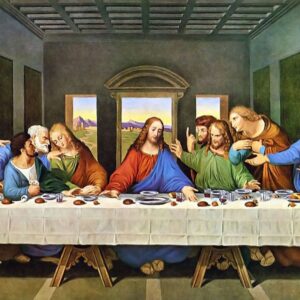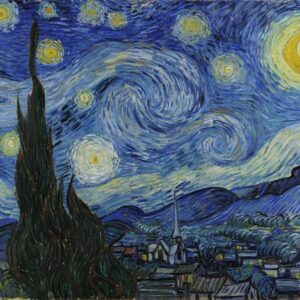Art
Secrets Behind Famous Artworks
Leonardo da Vinci’s Mona Lisa, painted between 1503 and 1506, is perhaps the most famous painting in the world. Its enigmatic smile has puzzled art enthusiasts and historians alike. The painting’s allure partly stems from this smile’s ambiguity. Some believe it reflects a range of emotions, from joy to melancholy, while others speculate it might be a symbol of da Vinci’s own elusive nature.
One of the most discussed aspects of the Mona Lisa is the use of sfumato, a technique where colors and tones are blended seamlessly. This technique contributes to the painting’s mysterious aura. Additionally, the identity of the woman portrayed remains a subject of debate. While many believe she is Lisa Gherardini, a Florentine merchant’s wife, alternative theories suggest she could be an idealized figure or even a self-portrait of da Vinci himself.
Recent studies have also shed light on the painting’s underlying details. Advanced imaging techniques have revealed hidden layers and adjustments that da Vinci made during the painting process. These revelations suggest that the Mona Lisa might have undergone significant changes, possibly reflecting da Vinci’s evolving artistic vision and the complex layers of her character.

Leonardo da Vinci’s The Last Supper, completed in 1498, is a masterpiece of composition and religious symbolism. This fresco depicts the final meal Jesus shared with his disciples before his crucifixion. However, the painting is shrouded in mystery and controversy. One of the most famous theories, popularized by Dan Brown’s The Da Vinci Code, suggests that the figure to Jesus’ right is Mary Magdalene, not John the Apostle. This theory is based on the figure’s androgynous appearance and the supposed absence of a halo, which would be unusual for a disciple.
Moreover, the arrangement of the figures and the use of perspective are said to hold deeper meanings. The triangular composition surrounding Jesus might symbolize the Holy Trinity, while the placement of each figure is thought to convey their emotional and psychological states. The painting’s deteriorating condition has also sparked debate about whether da Vinci intended for it to be seen in its current fragmented state.
Another intriguing aspect is the fresco’s method of application. Da Vinci experimented with new techniques that unfortunately led to the painting’s deterioration over time. Unlike traditional fresco methods, which involve applying pigments onto wet plaster, da Vinci used a dry plaster technique that did not adhere well, causing the painting to suffer from severe damage. Restoration efforts have attempted to preserve the artwork, but debates about the best methods continue.

Vincent van Gogh’s Starry Night, painted in 1889, is one of the most iconic images in art history. The swirling, tumultuous sky and the vibrant colors reflect van Gogh’s emotional turmoil and his innovative approach to painting. Van Gogh created this piece while in the Saint-Paul-de-Mausole asylum, and it’s widely believed that the painting represents his emotional response to the view from his asylum room.
The painting’s dynamic brushstrokes and vivid colors are often interpreted as a reflection of the artist’s psychological state. Some art historians suggest that the painting’s swirling patterns might represent the artist’s vision of the cosmos or his attempt to capture the turbulence of his inner life. Additionally, the cypress trees in the foreground are thought to symbolize death and eternity, bridging the gap between the earth and the heavens.
Interestingly, Starry Night was not initially well received and was only fully appreciated posthumously. The painting’s bold style and emotional depth were ahead of its time, and it wasn’t until later that the art world recognized its significance. The piece now holds a revered place in art history, symbolizing van Gogh’s unique vision and emotional intensity.

Salvador Dalí’s The Persistence of Memory, painted in 1931, is famous for its melting clocks and dreamlike landscape. This surrealist masterpiece challenges our perception of time and reality. The soft, melting clocks are often interpreted as a representation of the fluidity of time, a concept that Dalí explored in his work.
Dalí himself claimed that the idea for the melting clocks came from a dream about camembert cheese melting in the sun. The painting’s distorted and surreal elements reflect Dalí’s fascination with Freudian theory and the nature of human consciousness. The backdrop of the painting, with its barren, dreamlike landscape, serves to emphasize the distortion of time and reality, creating a sense of disorientation.
The painting’s surreal nature has inspired numerous interpretations, from philosophical musings on the nature of reality to more practical analyses of Dalí’s artistic techniques. The melting clocks might also be seen as a critique of rigid, conventional perceptions of time and reality, suggesting a more fluid and subjective experience.
Edvard Munch’s The Scream, painted in 1893, is one of the most recognizable and haunting images in modern art. The painting depicts a figure on a bridge with a distorted face, set against a tumultuous sky. Munch’s own diary reveals that the painting was inspired by a panic attack he experienced while walking in Oslo. He described the sensation of an overwhelming, all-consuming anxiety that he tried to convey through the painting’s intense colors and dramatic lines.
The figure’s expression, combined with the swirling, fiery sky, conveys a profound sense of existential dread and anguish. Munch’s use of bold colors and distorted forms was revolutionary at the time and has since influenced numerous artists and art movements. The painting’s emotional impact and its connection to Munch’s personal struggles continue to resonate with viewers around the world.
The painting’s iconic status has led to numerous reproductions and adaptations in popular culture. Its influence extends beyond art into various forms of media, highlighting the universal and timeless nature of the emotions Munch sought to portray.
Pablo Picasso’s Guernica, created in 1937, is a powerful political statement and a response to the Spanish Civil War. The mural-sized painting depicts the horrors of the bombing of Guernica, a Basque town, by Nazi German and Italian Fascist airforces. The chaotic composition and the use of monochromatic tones reflect the devastation and suffering caused by the attack.
The fragmented, distorted forms in Guernica are meant to convey the brutality and chaos of war. Picasso’s use of symbolism, such as the screaming horse and the anguished figures, enhances the painting’s emotional impact. Guernica has become a universal symbol of the tragedies of war and a testament to Picasso’s ability to use art as a powerful form of protest and commentary.
The painting’s scale and intensity make it a striking piece of political art, and it has been displayed around the world as a powerful reminder of the cost of conflict. Picasso’s choice to use a monochromatic palette emphasizes the bleakness of war and allows viewers to focus on the emotional and symbolic elements of the work.
Learn more: zgladnews


